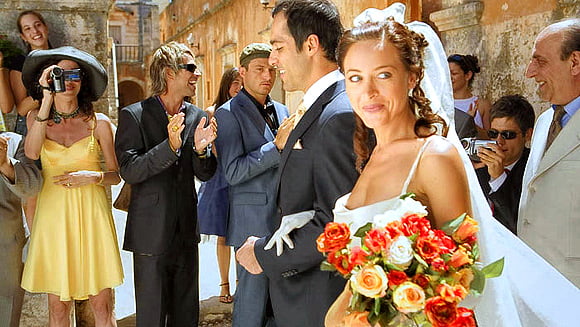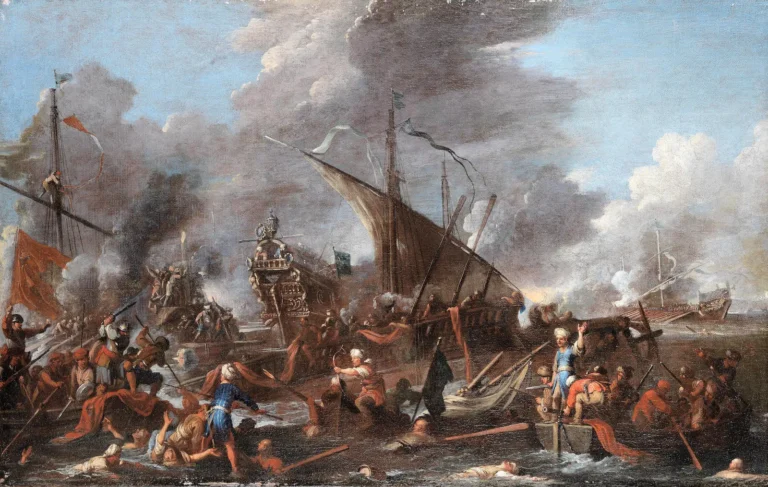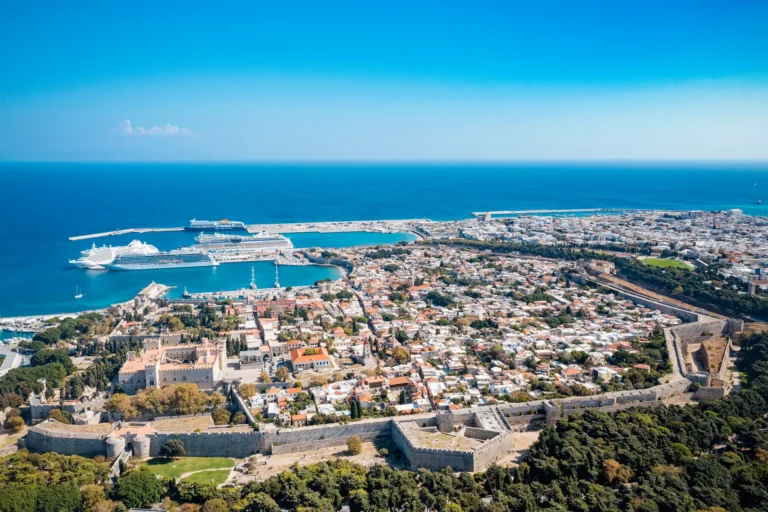
The Greek big, fat wedding


Wedding guests gossip quietly among themselves throughout the ceremony, guns are used in place of rice, and it is customary for the bride to step on the groom’s foot during the service in order to gain the upper hand in the marriage. Known for its symbolism and deep-rooted Orthodox tradition, one thing a Greek wedding is not – is small in scale, boring and lacking in extravagance.
On many islands and on the mainland, entire villages are still invited to share in the wedding day festivities which could last for up to three days. Family and friends gather on the Thursday prior to the wedding day to help the bride prepare the marital bed by decorating it with clean, crisp sheets, rose petals, rice and candy-coated almonds called koufeta, which are also served to guests at the reception.
Amongst all the eating and drinking, one of the traditional rituals of the krevati or marital bed is for guests to throw money for good luck and to roll a baby on the bed to encourage fertility. While the majority of brides are now driven to the church in luxury cars, it is not all that uncommon for brides to still make her way to the church on foot or be carried on horse-back or donkey, especially on many of the Greek islands such as the island of Crete.
Other brides are also serenaded by townspeople and musicians who will follow her from her family home towards the church. While many young Greek couples are opting nowadays to have a civil ceremony, it is still almost always followed by a religious service – not surprising in a country where nearly 98 per cent of the population are Greek Orthodox.
“More often than not, even couples that have been married before will choose to get married again in the church – the church allows people to get married three times during their lifetime,” says Father Ignatio at the Archdiocese of Athens. The religious service itself is separated into two parts: the service of the betrothal and the ceremony of the sacrament of marriage. In the betrothal service, the priest blesses the rings of the Bride and Groom and then hands them over to the Koumbaro, which can either be the best man or maid of honour, who then swaps the rings between the bride and groom’s fingers three times. This symbolizes the Holy Trinity: God, the Son and the Holy Spirit.
During the sacrament of marriage the bride and groom are crowned with thin crowns or stefana made from flowers or jewels and joined together by a white ribbon. The crowns symbolize the glory and honour that is being bestowed upon them by God and the ribbon symbolizes their unity. The best man (koumbaros) then exchanges the crowns between the heads of the couple three times. After a reading from the Gospel of Saint John which tells of the marriage feast at Cana, the couple drink wine from a common cup, signifying that they will be sharing the happiness and sorrows of life together.
In recent years, couples have tried to apply a more relaxed tone to the wedding ceremony with the “stomping of the foot.” While the priest is reading from the Bible, there is a section that says “the woman shall fear the man.” At this point, the groom will lightly step on the bride’s foot in order to gain the upper hand in the marriage, but more often than not the woman beats him to it and stomps on his foot instead. Still wearing their crowns, the priest will then lead the couple around the alter table three times in a circle, representing eternal marriage.
When the ceremonial walk ends, the priest removes the crowns and then separates the couples’ previously joined hands with the Bible, reminding them that only God can break their union into which they have just entered. While a storm of rice is often thrown at the bride and groom by guests during their walk around the alter, on the southern island of Crete gunshots are fired into the air in honour of the newly-married couple. Despite recent statistics which show that nearly 50 per cent of all marriages end in divorce, Greeks and foreigners alike are rushing to get married in such romantic locations such as vineyards, islands and even atop ski slopes.
Yiannis Kavalaris, an official at the Mayors Office on the romantic island of Santorini, says the request for civil marriage licences has reached an all-time-high this summer with almost all wedding services taking place just as the sun sets along the slopes of Kaldera:
“It’s been one wedding after the other since May and it will continue like this way into October,” he says.
Photo taken from the Greek film “Wedding party” (Γαμήλιο πάρτυ).


